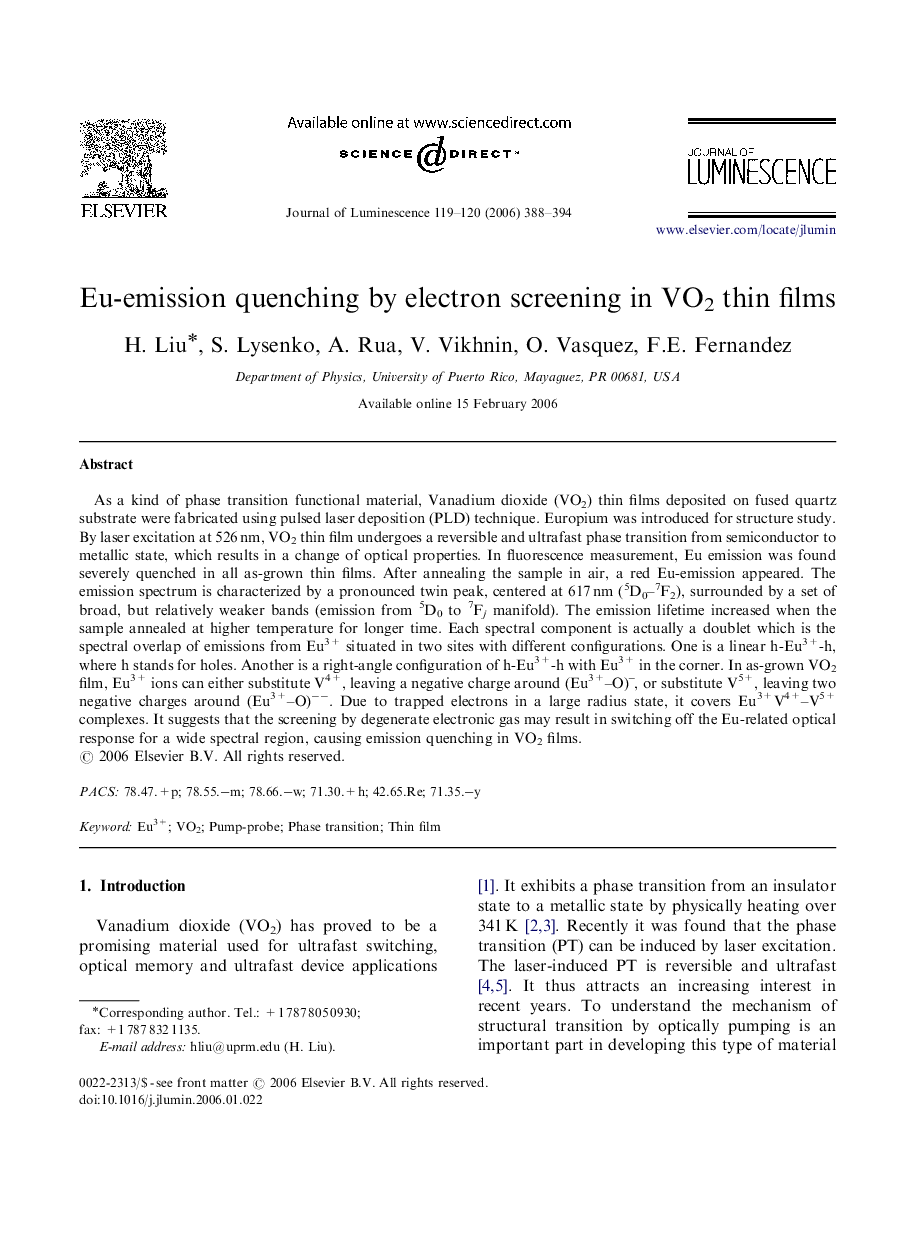| Article ID | Journal | Published Year | Pages | File Type |
|---|---|---|---|---|
| 5404208 | Journal of Luminescence | 2006 | 7 Pages |
Abstract
As a kind of phase transition functional material, Vanadium dioxide (VO2) thin films deposited on fused quartz substrate were fabricated using pulsed laser deposition (PLD) technique. Europium was introduced for structure study. By laser excitation at 526Â nm, VO2 thin film undergoes a reversible and ultrafast phase transition from semiconductor to metallic state, which results in a change of optical properties. In fluorescence measurement, Eu emission was found severely quenched in all as-grown thin films. After annealing the sample in air, a red Eu-emission appeared. The emission spectrum is characterized by a pronounced twin peak, centered at 617Â nm (5D0-7F2), surrounded by a set of broad, but relatively weaker bands (emission from 5D0 to 7Fj manifold). The emission lifetime increased when the sample annealed at higher temperature for longer time. Each spectral component is actually a doublet which is the spectral overlap of emissions from Eu3+ situated in two sites with different configurations. One is a linear h-Eu3+-h, where h stands for holes. Another is a right-angle configuration of h-Eu3+-h with Eu3+ in the corner. In as-grown VO2 film, Eu3+ ions can either substitute V4+, leaving a negative charge around (Eu3+-O)-, or substitute V5+, leaving two negative charges around (Eu3+-O)ââ. Due to trapped electrons in a large radius state, it covers Eu3+V4+-V5+ complexes. It suggests that the screening by degenerate electronic gas may result in switching off the Eu-related optical response for a wide spectral region, causing emission quenching in VO2 films.
Related Topics
Physical Sciences and Engineering
Chemistry
Physical and Theoretical Chemistry
Authors
H. Liu, S. Lysenko, A. Rua, V. Vikhnin, O. Vasquez, F.E. Fernandez,
